As the University of Houston Cougars complete their first season in the new TDECU Stadium, I’m reminded of a Houston Chronicle article on the project a couple of months ago that posed: “How do you take a big pile of concrete and make it look good?” Good question, and one that is all the more relevant when the budget is extremely low. The Chronicle went on to conclude the way we did it at TDECU Stadium is a winner.
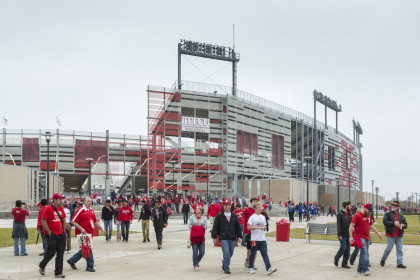
The University of Houston (UH) is a lean and mean university. A lot of its students are from families with modest incomes, and the university offers many strong, but affordable programs. They have an excellent School of Architecture, with a faculty that is really outstanding. I recently reviewed a promotion portfolio for Matthew Johnson, a younger faculty member there who worked for both Steven Holl and for Allied Works, and whose firm just won a TxA Design Award this year. Donna Kacmar is another outstanding faculty member who has just completed a book on the virtues of small houses and was instrumental in the outstanding “Women in Architecture” exhibit currently on display at Houston Center for Architecture.
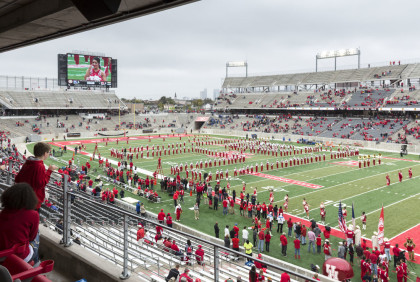
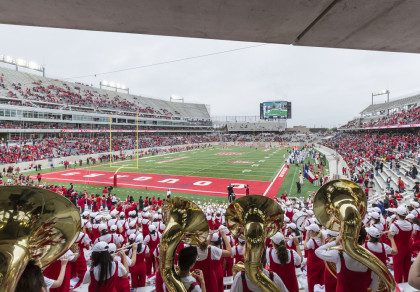
I’m very keen on UH, especially as a place where people of ordinary means can get a very good, education. The efficiency required for this kind of affordability applies in spades to the new football stadium. The university did not have a lot of money for the building, and from Day One they said we would have to stir up some magic. They needed us to make a significant building with a very small budget.
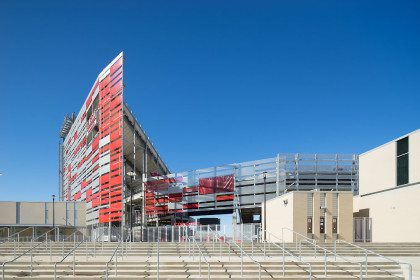
Stadiums have a lot of specific, complex requirements, including clear sight lines, concessions that feed hoards of people in short spans of time, TV access that must be flawless, ability to load and unload thousands of people in and out all at once, luxury accommodation for premium seating and suites, team and visitor security, locker rooms for pampered athletes, etc., etc. Just storing the amount of ice for beverages to serve 40,000 spectators (while keeping it fresh and distributing it all at once) is an astonishing task. This is one of the coolest things about architecture—dealing with how to make things work.
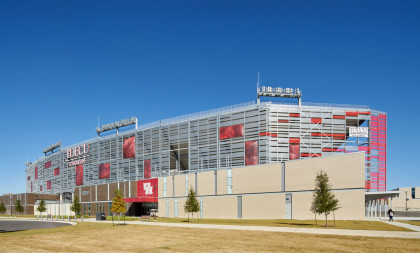
In addressing these issues, we worked with a handful of extraordinary sports designers from DLR Group: primarily Greg Garlock in Omaha and Don Barnum and Bob Carlson in Kansas City. All of them are great to work with, and they essentially eat and live sports.

In addition to making a fine-tuned sports machine, we had to make the building fit in the campus and into the larger city on a site that is prominently located on Cullen Blvd and is at a gateway to the campus from the new light rail line.
Above all, the stadium had to be a nexus. This is where tens of thousands of people experience the UH campus in a very intense setting that leaves a strong impression of what this school is. Kids may grow up with their only exposure to UH being a football game they attended, and their decision about where to go to college may be significantly shaped by that. I think when they leave this stadium they will come away with a sense of a place that is vibrant, alive, and promising. To quote again from the Chronicle’s article, for University of Houston, “the new TDECU Stadium is a game-changer.”
I am a long-standing advocate of creating outstanding architecture built on a shoestring budget. Much of the world has to work within tight budgetary constraints, and we need to be able, as architects, to deal with those constraints skillfully and powerfully.